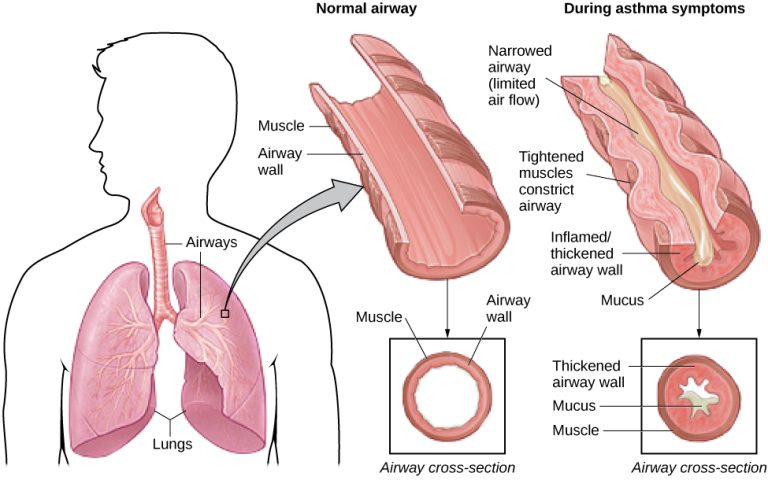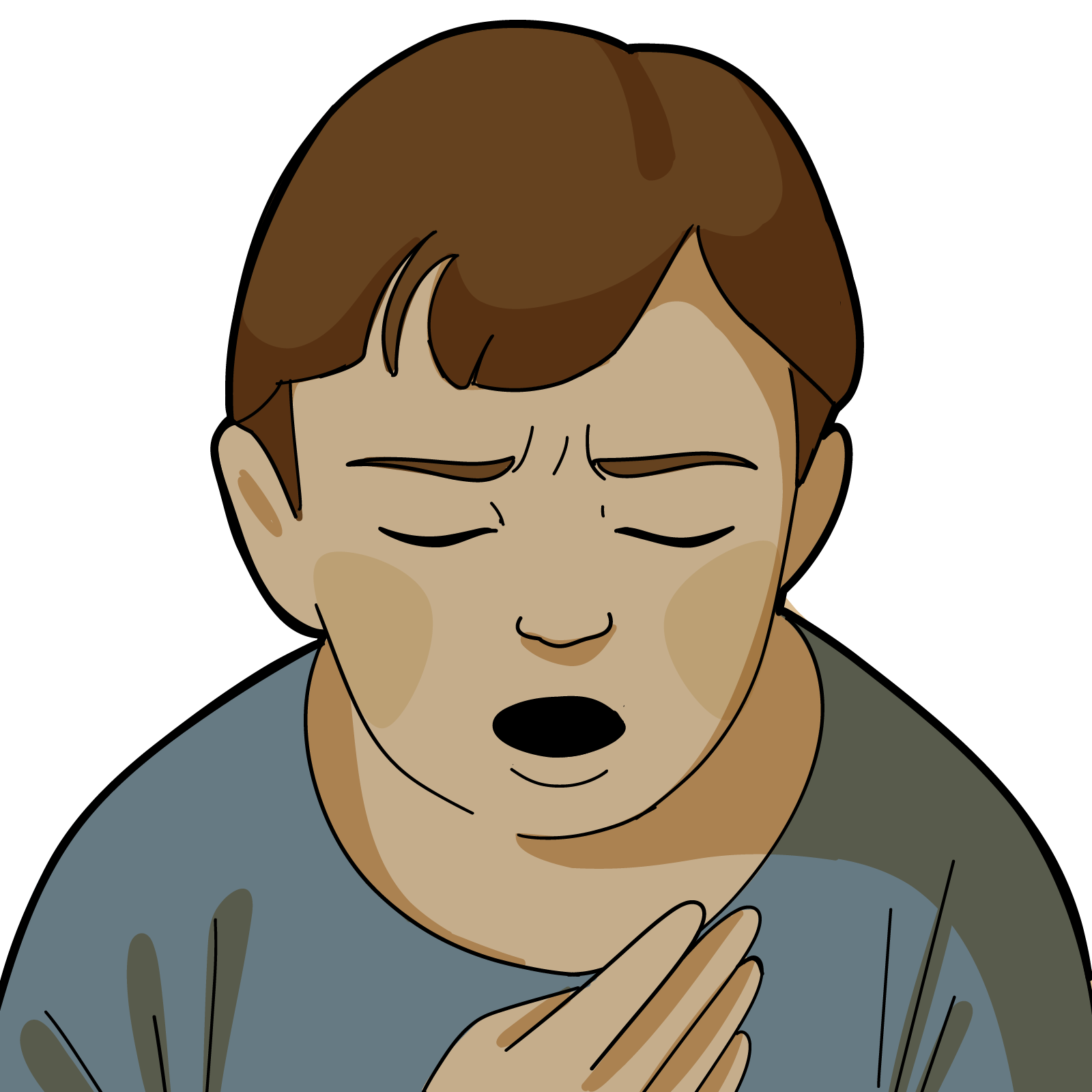Chapter 17. Well-Being
WB.32: Deep Dive – Asthma and Environmental Stress
Approximate reading time: 5 minutes
Asthma is a chronic and serious disease in which the airways of the respiratory system become obstructed, leading to great difficulty expelling air from the lungs. The airway obstruction is caused by inflammation of the airways (leading to thickening of the airway walls) and a tightening of the muscles around them, resulting in a narrowing of the airways (Figure W.19) (American Lung Association, 2010). Because airways become obstructed, a person with asthma will sometimes have great difficulty breathing and will experience repeated episodes of wheezing, chest tightness, shortness of breath, and coughing, the latter occurring mostly during the morning and night (CDC, 2006).

Asthma is a significant health concern in the United States. Recent studies show that asthma is responsible for around 4,000 deaths annually (Siddiqui & Kopas, 2017). It’s also a condition that affects a large number of adults, with estimates suggesting that over 25 million people in the U.S. had asthma in 2010 (Akinbami et al., 2012). Asthma is more commonly found in individuals with lower income and education levels. This is evident from research showing higher asthma prevalence among those living below the poverty line and certain racial/ethnic minority groups (Herman et al., 2011; H. M.P. & Snider, 2004). While there has been an increase in asthma cases, the exact rate of this increase is not as high as previously thought. For instance, the prevalence of asthma among children rose slightly from 8.7% in 2001 to 9.4% in 2010 (Zahran et al., 2018).
Asthma is a big health issue in Canada, touching many lives. A study looking at Alberta from 1995 to 2015 found that more people are getting asthma. For women, the number went up from about 4 out of 100 to 12 out of 100. For men, it went from about 4 out of 100 to almost 12 out of 100 (Bosonea et al., 2020).
During the COVID 19 pandemic, fewer children with asthma went to the emergency room in Montréal, Quebec. But, those who did had more serious problems (Chelabi et al., 2023). Another study focused on young children in kindergarten. It found that having asthma can really affect how they grow and interact with others. This shows why it’s so important to find out early if a child has asthma and help them (Schneeweiss et al., 2021).

Asthma attacks are acute episodes in which an asthma sufferer experiences the full range of symptoms. Asthma exacerbation is often triggered by environmental factors, such as air pollution, allergens (e.g., pollen, mold, and pet hairs), cigarette smoke, airway infections, cold air or a sudden change in temperature, and exercise (CDC, 2013b).
Recent studies have shown that our mental state, like stress and anxiety, can have a big impact on asthma. These psychological factors can make asthma symptoms worse and affect how our immune system and lungs work (Gueiros Lira et al., 2022; Miyasaka et al., 2018). For example, when someone is stressed, it can trigger or increase asthma symptoms. This happens because stress affects the body’s immune response and the way our airways function. Also, how we feel emotionally can change how we perceive asthma symptoms, making them seem more severe. This means that managing stress and emotional well-being is an important part of taking care of asthma (Rosenkranz et al., 2012; Chen & Miller, 2007).
Treating psychological symptoms like anxiety and depression can help people with asthma manage their condition better. Research shows that when kids with severe asthma get help for these psychological issues, their asthma control improves (Griffiths et al., 2019). Adults with asthma also benefit from psychological support. For example, feeling more confident and in control (known as self-efficacy and locus of control) is linked to better asthma management and a higher quality of life (Schreitmüller & Loerbroks, 2020). Additionally, addressing psychological factors can improve overall well-being and daily functioning for asthma patients (Stanescu et al., 2019). This means that taking care of both the mind and body is important for people with asthma.
Image Attributions
Figure SUP WB.9. Figure 14.21 as found in Psychology 2e by OpenStax is licensed under a CC BY 4.0 License.
Figure SUP WB.10. Asthma by Rachel Lu is licensed under a CC BY-NC-SA license.
To calculate this time, we used a reading speed of 150 words per minute and then added extra time to account for images and videos. This is just to give you a rough idea of the length of the chapter section. How long it will take you to engage with this chapter will vary greatly depending on all sorts of things (the complexity of the content, your ability to focus, etc).

